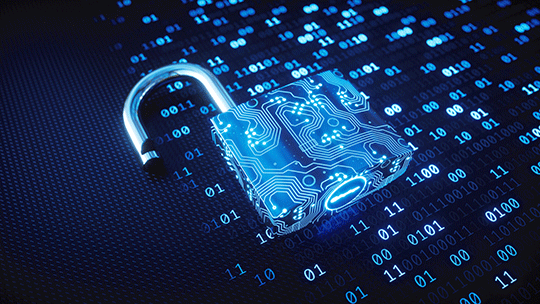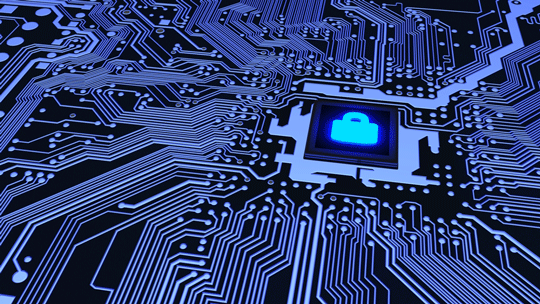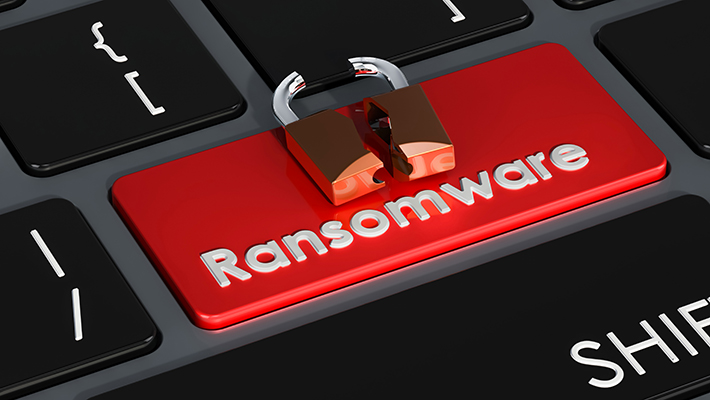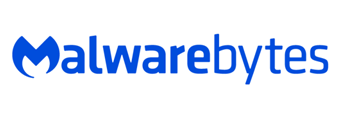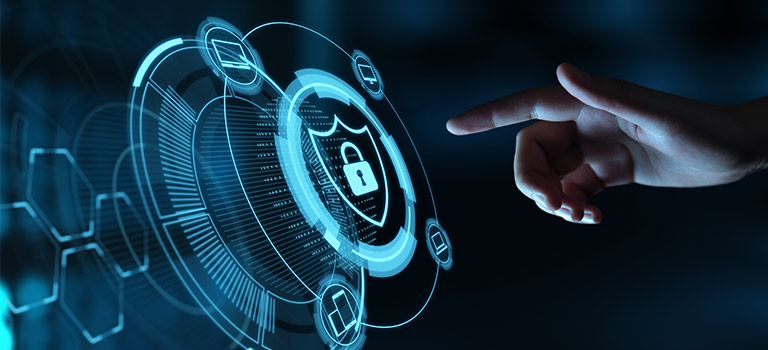Cyber Security
Protect your business data from unauthorized access and data corruption throughout its life-cycle.
Cyber Security
Public institutions and businesses around the globe are heavily vested in information technology (IT) cyber security capabilities to protect their critical assets. Whether an enterprise needs to protect intellectual capital, brand, customer information or controls for critical infrastructure, the means for incident detection, intrusion and response to protecting organizational assets have three common elements: people, processes, and technology.
Large threats target small enterprises.
Protect and defend your organization against the inevitability of cyberattack.
Typically, we think most cyber attacks are specifically motivated toward larger, resource-rich or brand-established organizations, the proliferation through automation of cyber attack techniques has made many security threats somewhat indiscriminate. However, we see small medium enterprises (SMEs) tend to be seen as less able to defend against such an attack. Despite their size, SMEs need information security programs to protect their systems and assets just as much as the larger enterprises.
Traditionally, most organizations are not doing a good enough job of the security fundamentals, which is why attackers have been able to use the same old tricks.
Traditional and well understood attacks still work quite well, and so attacks are simply an evolution of those same tactics, not a revolution.
Hopefully, information security has finally caught the attention of organizational leaders, presenting the opportunity to implement more comprehensive security programs.
Your security controls are diminishing in value (if they haven’t already).
As technology in the industry evolves, threat actors will inevitably adopt new tools, tactics, and procedures; a threat intelligence program can provide relevant situational awareness to stay on top of the rapidly-evolving threat landscape.
Your organization might not be the final target.
But it could be a primary path for attackers. If you exist as a third-party partner to another organization, your responsibility in your technology ecosystem extends beyond your own product/service offerings. Threat intelligence provides visibility into the latest threats, which can help you avoid becoming a backdoor in the next big data breach.
Phishing attacks
Phishing attacks are climbing, and despite filtering and awareness, email remains the most common threat vector for phishing attacks (96%), and an average of 4% of participants in phishing campaigns still click on them.2
Insider privilege and misuse
Typically, 28% of breaches are perpetrated by insiders, with 12% involving privilege misuse.2 Takeaway: Care less about titles and more about access levels.
Denial-of-service attacks
The median amount of time that an organization is under attack from a distributed denial-of-service (DDoS) attack is three days.2
Emerging Trend: Advanced identity and access governance
Using emerging technologies in automation, orchestration, and machine learning, the management and governance of identities and access has become more advanced.1
Sources: 1“2017 Cost of Cyber Crime Study,” Ponemon Institute, 2017; 2Verizon, 2018
The Costs of Ignoring Cyber Security
Cyberattacks and breaches hit small enterprises harder.
89% of breaches have a financial or espionage motive.
Source: Verizon, “2018 Data Breach Investigations Report”
6 out of 10 small or medium enterprises go out of business within six months of an attack.
The full extent of damage from an attack can extend past the loss of data and finances. Reputational damage as a vulnerable entity can cost SE organizations critical relationships that they depend on to survive.
Threats are considered unlikely or not taken seriously by business leaders. Furthermore, 35% of SEs have their security responsibilities dispersed throughout the company and 47% do not understand how to protect against attack. This confusion and/or lack of security leadership increases the difficulty of managing or preventing risk and assessing security operations and maturity (“2018 State of Cyber Security…,” Ponemon Institute, 2018).
Over the last two years, the accelerating cost of cyber
crime means that it is now 23 percent more than last year and is costing organizations, on average, US$11.7 million. Whether managing incidents themselves or spending to recover from the disruption to the business and customers, organizations are investing on an unprecedented scale—but current spending priorities show that much of this is misdirected toward security capabilities that fail to deliver the greatest efficiency and effectiveness. (“COST OF CYBER CRIME STUDY 2017 INSIGHTS ON THE SECURITY INVESTMENTS THAT MAKE A DIFFERENCE” Accenture, 2017). Cost of cyber Crime Study
How does the technology work?
The endpoint software adds a barrier to your protected files preventing them from direct changes. When an application tries to modify a protected file, it gets redirected and the file modification is stored on an overlay, keeping the original file intact. Later, if you want to go back to the original file you can simply delete the data on the overlay.
This process of deleting data on the overlay is called reverting changes.
Files can still be sent and shared electronically through email or via collaboration in Teams. If an attack occurs it is only the last change that gets rolled back.
What happens if a software upgrade goes wrong and I must roll it back?
Call us up and we can roll that back in minutes as well. Even a full upgrade from Windows 10 to 11 can be rolled back.
The reason rapid ransomware rollback works so quickly is because it is significantly faster to delete a file change than it is to restore from a backup copy. The solution also provides critical kernel level monitoring so that malicious activities targeted towards the kernel are stopped as well. CPU utilization is typically less than 0.01%, memory usage around 25MB of RAM and for every 100 MBs of files protected is uses an additional 10MBs on the devices disk.
What about hackers?
We have also thought about the hackers and how they will attempt to delete end point security products as part of their ransomware attack. Don't worry, we have protected ourselves from that as well. Once installed, it requires permission from us to be uninstalled. That permission is well protected behind two factor authentication in our cloud console.
Make Cyber Security a #1 Priority.
Our Partners in Cyber Security
Azure RMS is a cloud-based protection service that uses encryption, identity, and authorization policies to help secure files and emails across multiple devices, including phones, tablets, and PCs. Protection settings remain with your data, even when it leaves your organization’s boundaries, keeping your content protected both within and outside your organization.
Cyber Security Protects Your Business Assets and Reputation
Quickly scale up and down resources according to application demand.
Enhances Your Data Management Capabilities
IaaS allows enterprises to focus more on core business activities instead of IT/computing infrastructure.
Continuity and Disaster Recovery
Cloud service in different locations allows access to applications and data during a disaster or outage.

